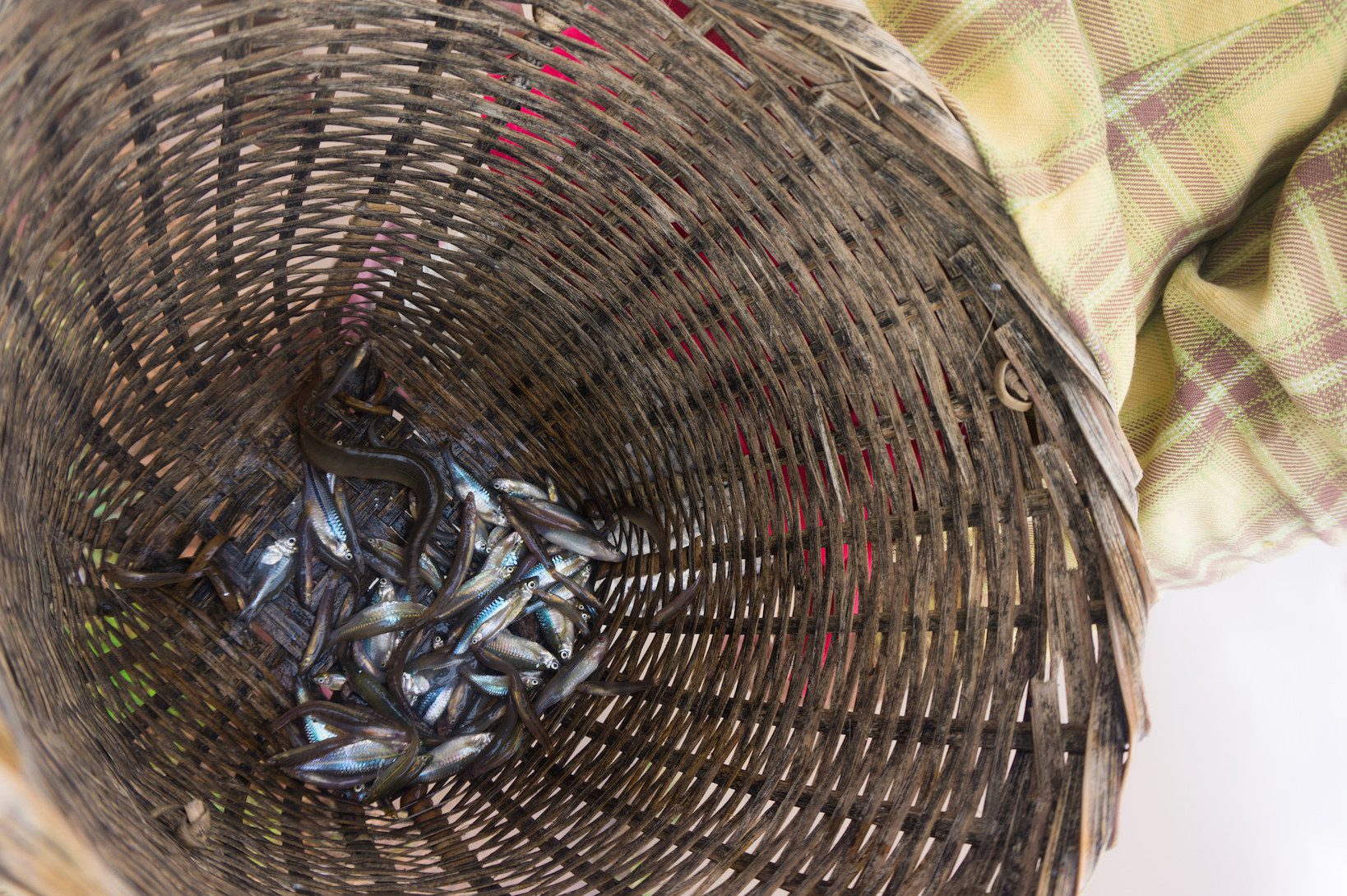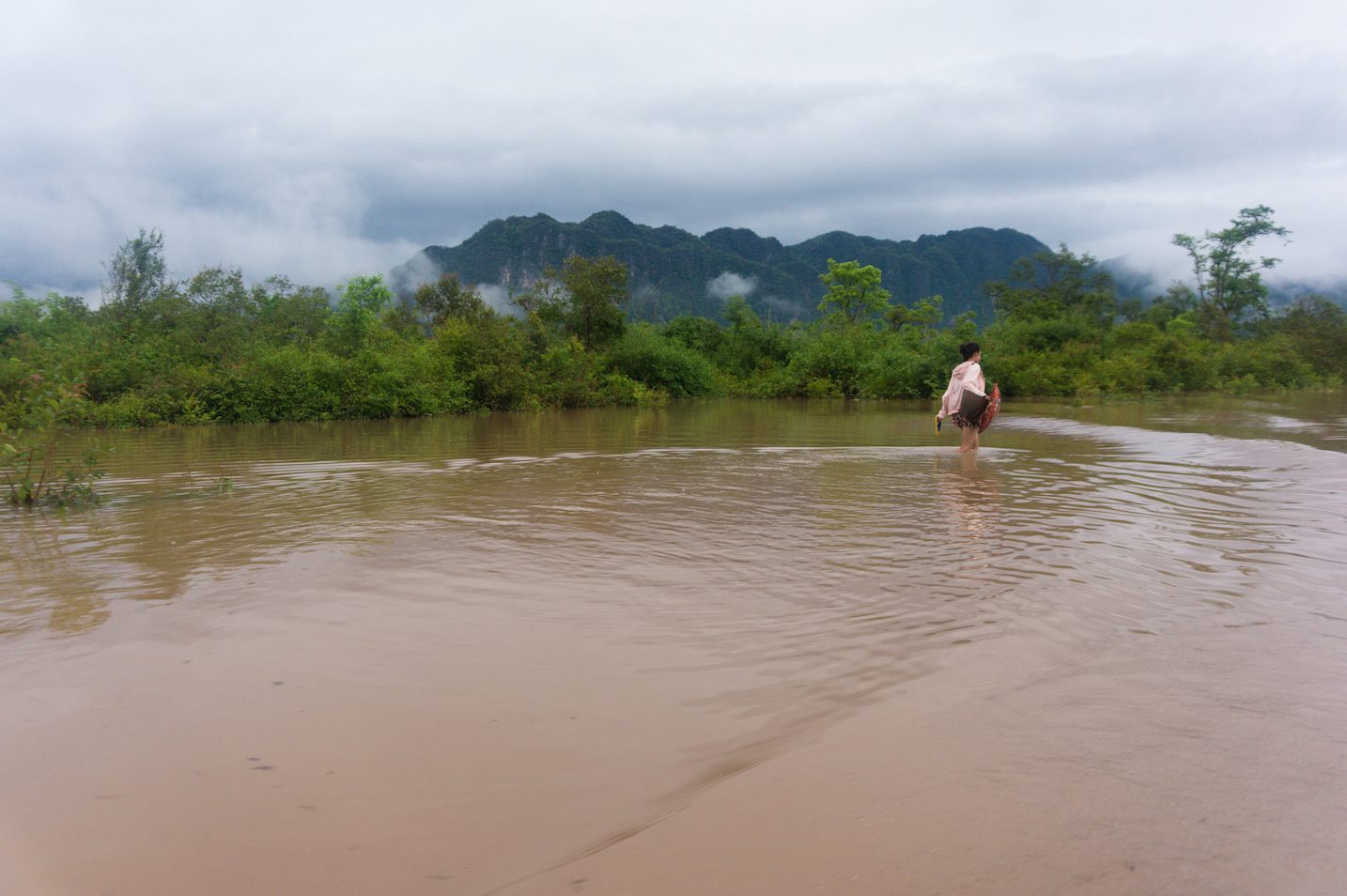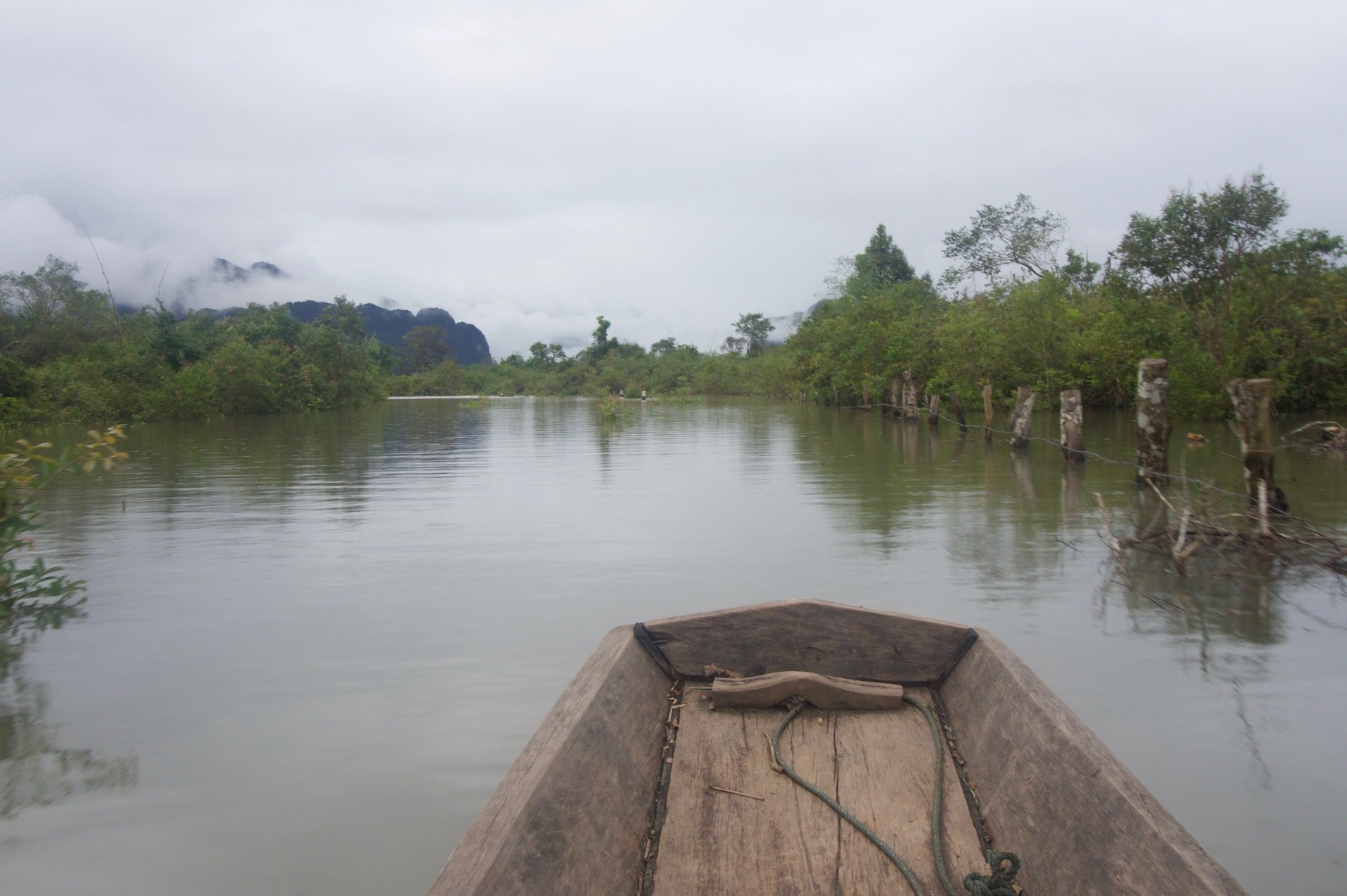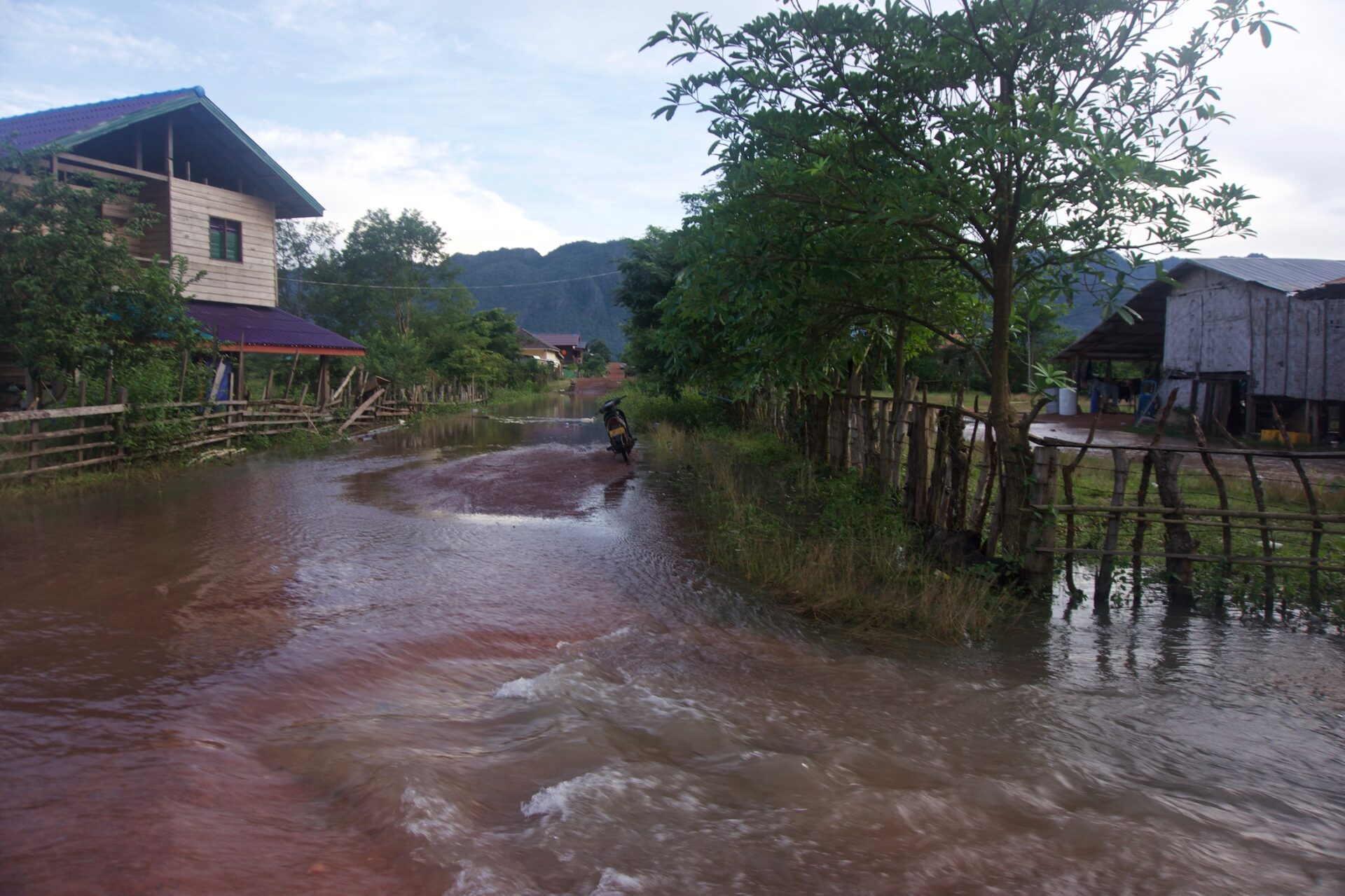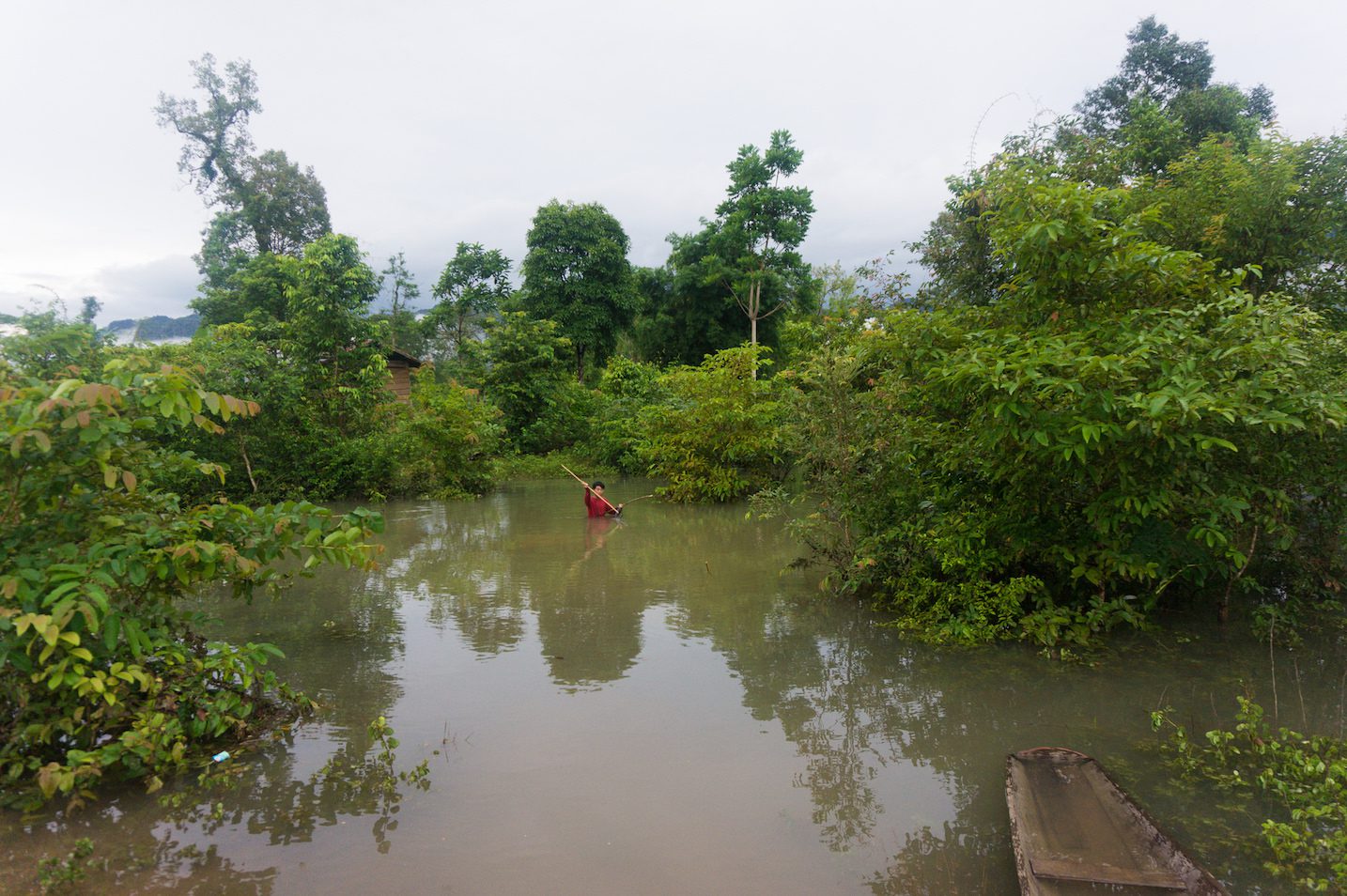Wednesday September 20, 2017
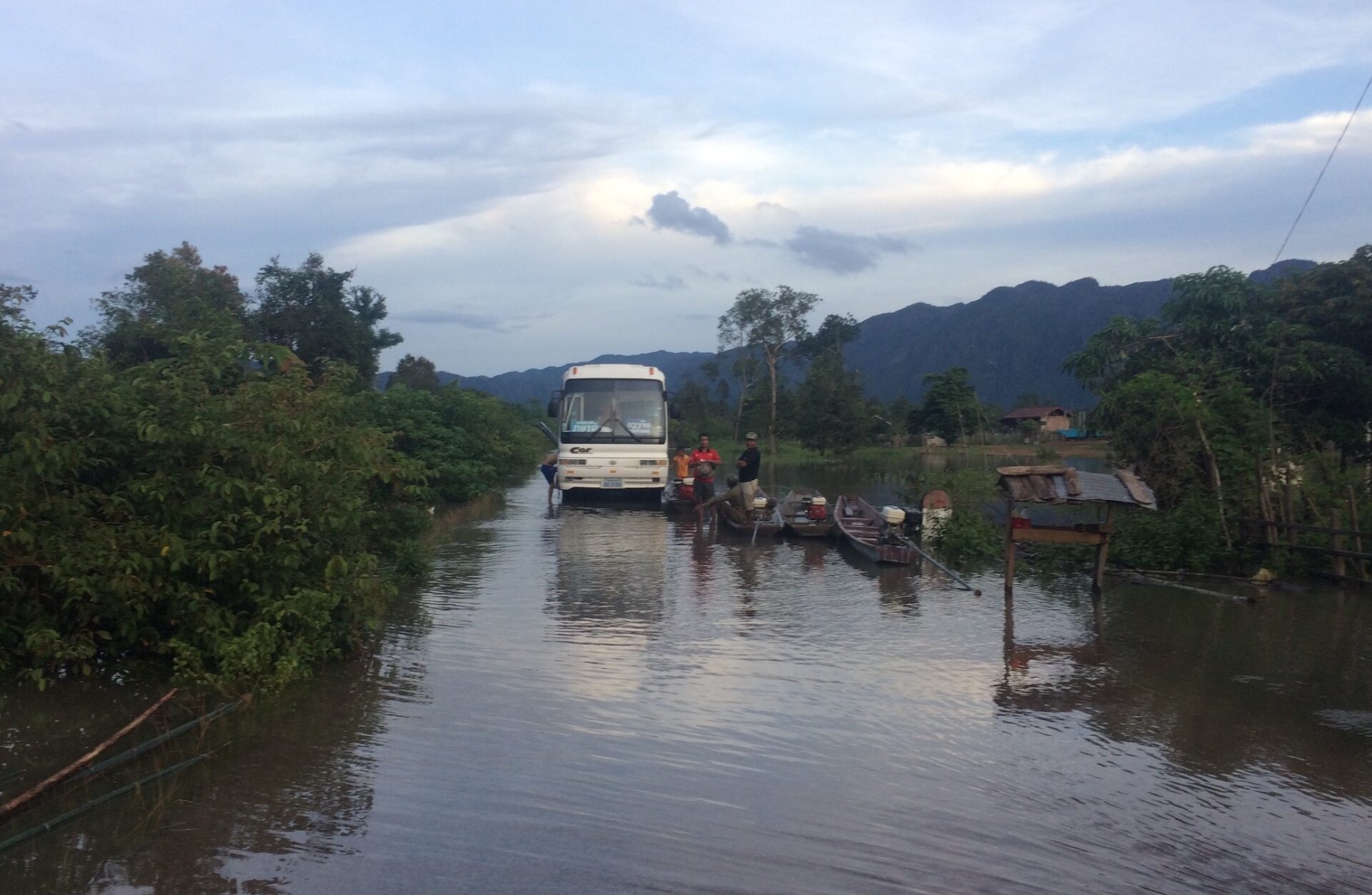
The rainy season in Laos brings a whole new level of uncertainty to field work, and requires extra resourcefulness. After our team recently led a training on how to use our draft assessment guidebook for Fish Conservation Zones (FCZs) in the capital city of Vientiane, the next step was to head to one of our pilot sites for some hands-on practice. We set off for the village of Konglor in Khammouane Province, a five-hour drive southeast of Vientiane. Our project partner World Wide Fund for Nature (WWF) helped the community establish an FCZ in 2012 in the river near their village, located at the mouth of a karst cave that serves as a popular ecotourism site. Trying to reach this village presented a few more obstacles than we had anticipated.
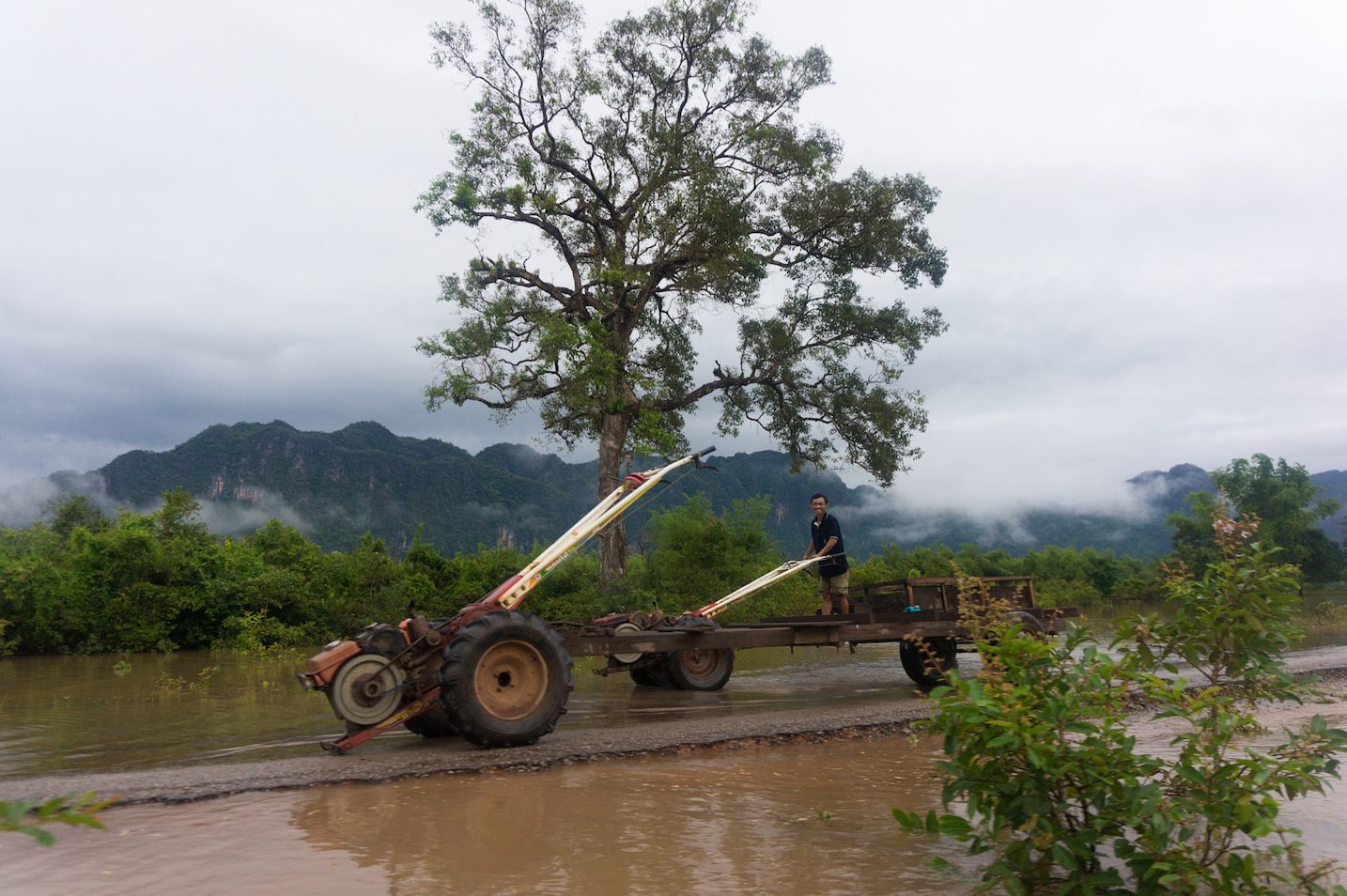
After driving on winding mountain roads while dodging cows, goats, dogs, and giant commercial trucks, we came within nine miles of the village to find the road heavily flooded by a recent rainstorm. Our pickup truck intrepidly plowed through a few feet of water, but we came to an impasse once the water reached waist deep in places. As the sun started to set, we watched ducks swim in the street and the occasional small fish get swept across the road as we contemplated our next move. A bus that was unable to reach the village waited in the water for passengers to make their own way to and from Konglor by boat. We decided to try again in the morning.
However, the water had receded only slightly by the next day. The villagers have become accustomed to the challenges of yearly flooding, and fortunately fishermen were on hand to make some quick cash ferrying stranded travelers across the water. The flooding also made for easy fishing from the road, and we saw a group of women, men, and children with lift nets of all sizes trying their luck at catching small fishes. One fisher let us peek inside her basket, which revealed a successful catch. We piled into shallow boats to make our way across the road that lay somewhere deep below us. Undaunted by the watery roadblock, some people walked their scooters through the flood, while another brave soul transported his motorbike in a narrow wooden boat. The still, brown water reflected the foggy peaks of the surrounding karst mountains. Watch our video to experience the journey!
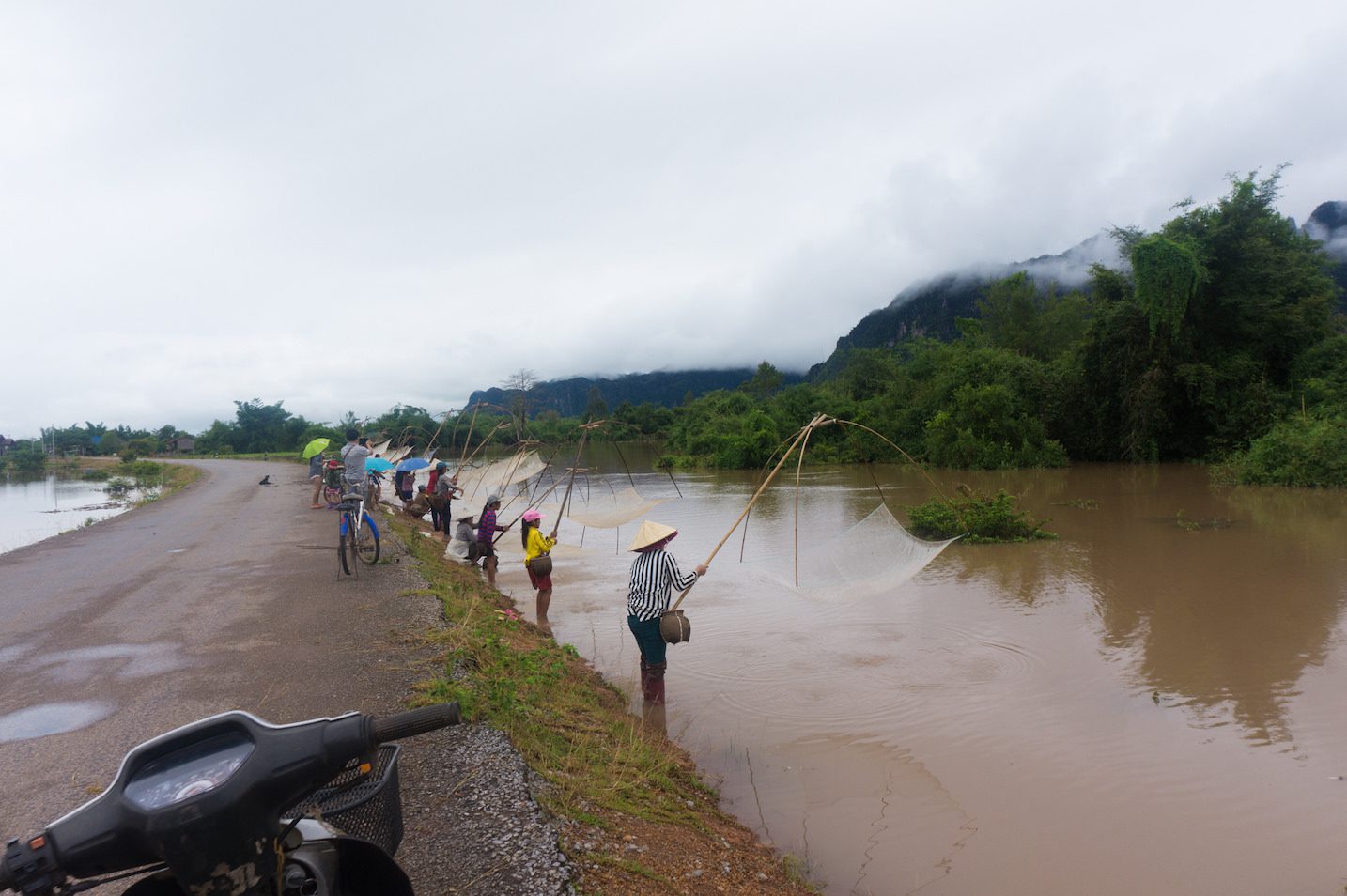
After a mere five-minute trip by boat, we took a bumpy van ride the rest of the way to the village, where WWF staff tried their hand at selecting relevant indicators for an FCZ assessment with the help of the guidebook. The community shared that their goals for establishing the FCZ were to increase village income, to increase the abundance of fish species, and for their future generations to understand the value of environmental conservation. As part of pilot testing the draft FCZ assessment guidebook, WWF will help the community measure progress towards some of these goals, and give us feedback on how to improve the guidebook. We can now add creative transportation to the lessons learned from our project so far!


